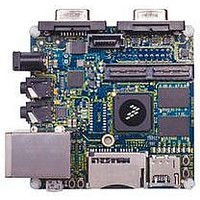MCIMX53-START Freescale Semiconductor, MCIMX53-START Datasheet - Page 9

MCIMX53-START
Manufacturer Part Number
MCIMX53-START
Description
KIT DEVELOPMENT I.MX53
Manufacturer
Freescale Semiconductor
Series
i.MX53r
Type
MCUr
Datasheets
1.MCIMX53-START.pdf
(2 pages)
2.MCIMX53-START.pdf
(180 pages)
3.MCIMX53-START.pdf
(204 pages)
Specifications of MCIMX53-START
Contents
Board
Silicon Manufacturer
Freescale
Core Architecture
ARM
Core Sub-architecture
Cortex - A8
Silicon Core Number
I.MX5
Silicon Family Name
I.MX53
Peak Reflow Compatible (260 C)
Yes
Rohs Compliant
Yes
Leaded Process Compatible
Yes
Lead Free Status / RoHS Status
Lead free / RoHS Compliant
For Use With/related Products
i.MX53
Lead Free Status / Rohs Status
Supplier Unconfirmed
Available stocks
Company
Part Number
Manufacturer
Quantity
Price
Freescale Semiconductor
Mnemonic
DEBUG
EXTMC
EPIT-1
EPIT-2
Block
ESAI
Debug System
External Memory
Controller
Enhanced
Periodic Interrupt
Timer
Enhanced Serial
Audio Interface
Block Name
i.MX53xA Automotive and Infotainment Applications Processors, Rev. 1
Table 2. i.MX53xA Digital and Analog Blocks (continued)
System
Control
Connectivity
Peripherals
Timer
Peripherals
Connectivity
Peripherals
Subsystem
The debug system provides real-time trace debug capability of both
instructions and data. It supports a trace protocol that is an integral part of
the ARM Real Time Debug solution (RealView).
Real-time tracing is controlled by specifying a set of triggering and filtering
resources, which include address and data comparators, three
cross-system triggers (CTI), counters, and sequencers.
debug access port (DAP) —The DAP provides real-time access for the
debugger without halting the core to system memory, peripheral register,
debug configuration registers and JTAG scan chains.
The EXTMC is an external and internal memory interface. It performs
arbitration between multi-AXI masters to multi-memory controllers, divided
into four major channels, fast memories (DDR2/DDR3/LPDDR2) channel,
slow memories (NOR-FLASH / PSRAM / NAND-FLASH etc.) channel,
internal memory (RAM, ROM) channel and graphical memory (GMEM)
channel.
In order to increase the bandwidth performance, the EXTMC separates the
buffering and the arbitration between different channels so parallel
accesses can occur. By separating the channels, slow accesses do not
interfere with fast accesses.
EXTMC Features:
Each EPIT is a 32-bit “set and forget” timer that starts counting after the
EPIT is enabled by software. It is capable of providing precise interrupts at
regular intervals with minimal processor intervention. It has a 12-bit
prescaler for division of input clock frequency to get the required time
setting for the interrupts to occur, and counter values can be programmed
on the fly.
The enhanced serial audio interface (ESAI) provides a full-duplex serial port
for serial communication with a variety of serial devices, including
industry-standard codecs, SPDIF transceivers, and other processors.
The ESAI consists of independent transmitter and receiver sections, each
section with its own clock generator.
The ESAI has 12 pins for data and clocking connection to external devices.
• 64-bit and 32-bit AXI ports
• Enhanced arbitration scheme for fast channel, including dynamic master
• Flexible bank interleaving
• Support 16/32-bit DDR2-800 or DDR3-800 or LPDDR2.
• Support up to 2 GByte DDR memories.
• Support NFC, EIM signal muxing scheme.
• Support 8/16/32-bit Nor-Flash/PSRAM memories (sync and async
• Support 4/8/14/16-bit ECC, page sizes of 512-B, 2-KB and 4-KB
• Multiple chip selects (up to 4).
• Enhanced DDR memory controller, supporting access latency hiding
• Support watermark for security (internal and external memories)
priority, and taking into account which pages are open or closed and
what type (read or write) was the last access
operating modes), at slow frequency. (8-bit is not supported on
D[23]-D[16]).
Nand-Flash (including MLC)
Brief Description
Modules List
9











